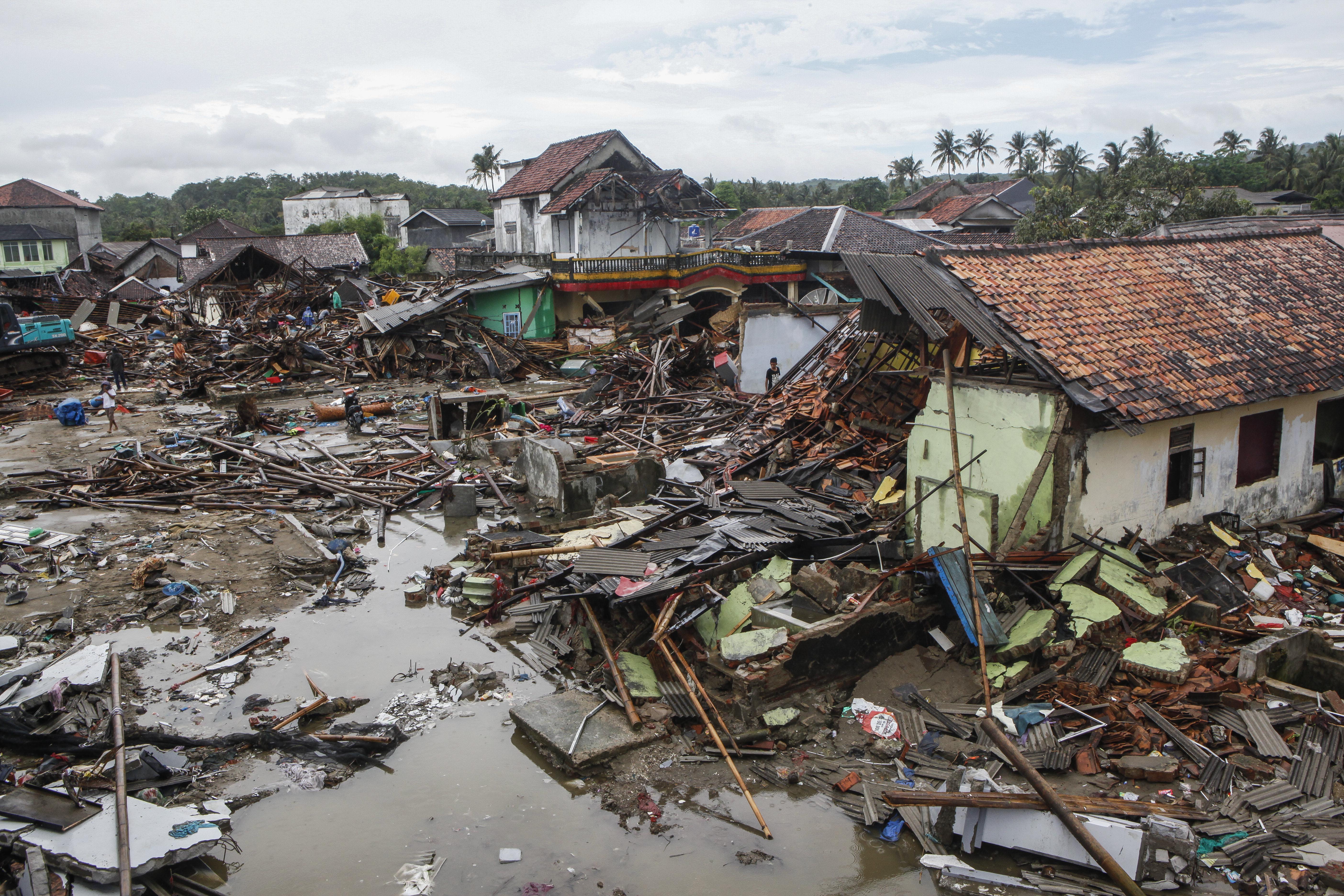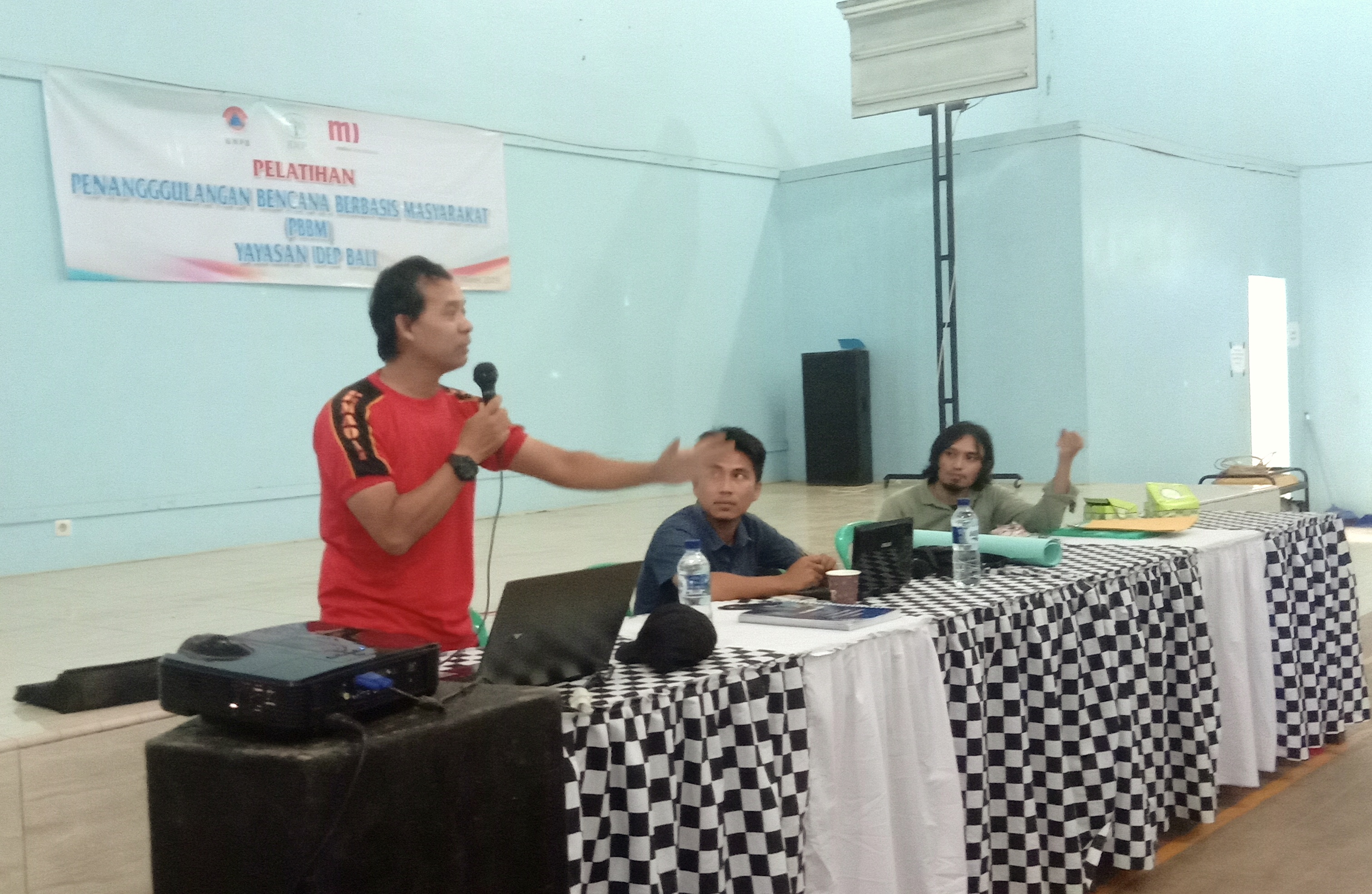Encouraging Disaster Preparedness in Banten, IDEP Conducted Community-Based Disaster Management Training
On Saturday night, December 22, 2018, Sunda Strait Tsunami hit the coastal areas of Banten and Lampung. From data released by the National Disaster Management Agency (BNPB) six days later, the tsunami caused 426 people to die, 7,202 injured, 23 not yet found and 40,386 displaced at a number of evacuation camps.
Pandeglang Regency, Banten, is one of the most affected areas. Worse, some villages there were isolated as the road access cut off by the tsunami. The aid has had arrived a few days after. During that time, residents who mostly evacuated in huts in the paddy fields were forced to survive with a minimum stock.

The residential area in Pandeglang damaged by the tsunami (Photo: Agoes Rudianto/The Diplomat)
As an emergency response, IDEP focuses on distributing basic needs in the form of a Family Bucket aid package for evacuees of the five isolated villages in the Regency. The five are Ujung Jaya, Taman Jaya, Tunggal Jaya, Cigorondong and Sumber Jaya. This two-week aid package contains healthy food and drinks, shelter equipment, kitchen utensils, medicines, sanitation equipment, and disaster-related educational media that is practically packaged in a bucket.

Women in Taman Jaya Village, Pandeglang, after receiving Family Bucket aid packages (Photo: Ida Bagus Wahyu Permana)
Community Disaster Management Group
Learning from the experiences of the isolated evacuees, IDEP partnered with Cibaliung Sababatur to held a Community-Based Disaster Management Training for tsunami-affected communities in Pandeglang on March 13, 2019. The training, which was located in the Cibaliung Sub-District Sports Hall, Pandeglang, was attended by 50 representatives from five villages including Ujung Jaya, Taman Jaya, Cogorondong, Kertamukti, and Sukajadi.

IDEP Emergency Response Team is facilitating the session on Community Disaster Management Group (Photo: Abina Haidar)
This training was intended to develop the disaster preparedness of the community in disaster-prone areas. In that way, they are able to map the threat of disasters that might occur in their area, assess their potential to manage the disaster and then prepare mitigation plans when disasters come. IDEP encouraged participants to form a Community Disaster Management Group (CDMG) in each of their villages to make the idea of preparedness works.
This training was facilitated by IDEP's Emergency Response Team and the representative of the Banten Disaster Management Agency (BPBD). To be more applicable, the training was presented more in the form of group discussions and assignments.

The facilitator from BPBD of Banten, red shirt, is sharing about the disaster and how to reduce the risk (Photo: Abina Haidar)
Responses from the Community
The participants, in general, responded to this training with enthusiasm. It was particularly related to the idea of CDMG. As far as their recognition, Banten, in general, does not have community-based disaster management yet.

Participants with the facilitators and organizer in a frame (Photo: Abina Haidar)
"Thank you to the organizers because the training helps us to know more about the disaster and how to manage it to reduce the risk. We also become aware of the importance of disaster preparedness," answered Adi AR, one of the participants, when asked about the benefits they got from this training. (Ed)
Subscribe to IDEP Newsletters
Give a gift that will change lives. 100% funds charity projects.
|






